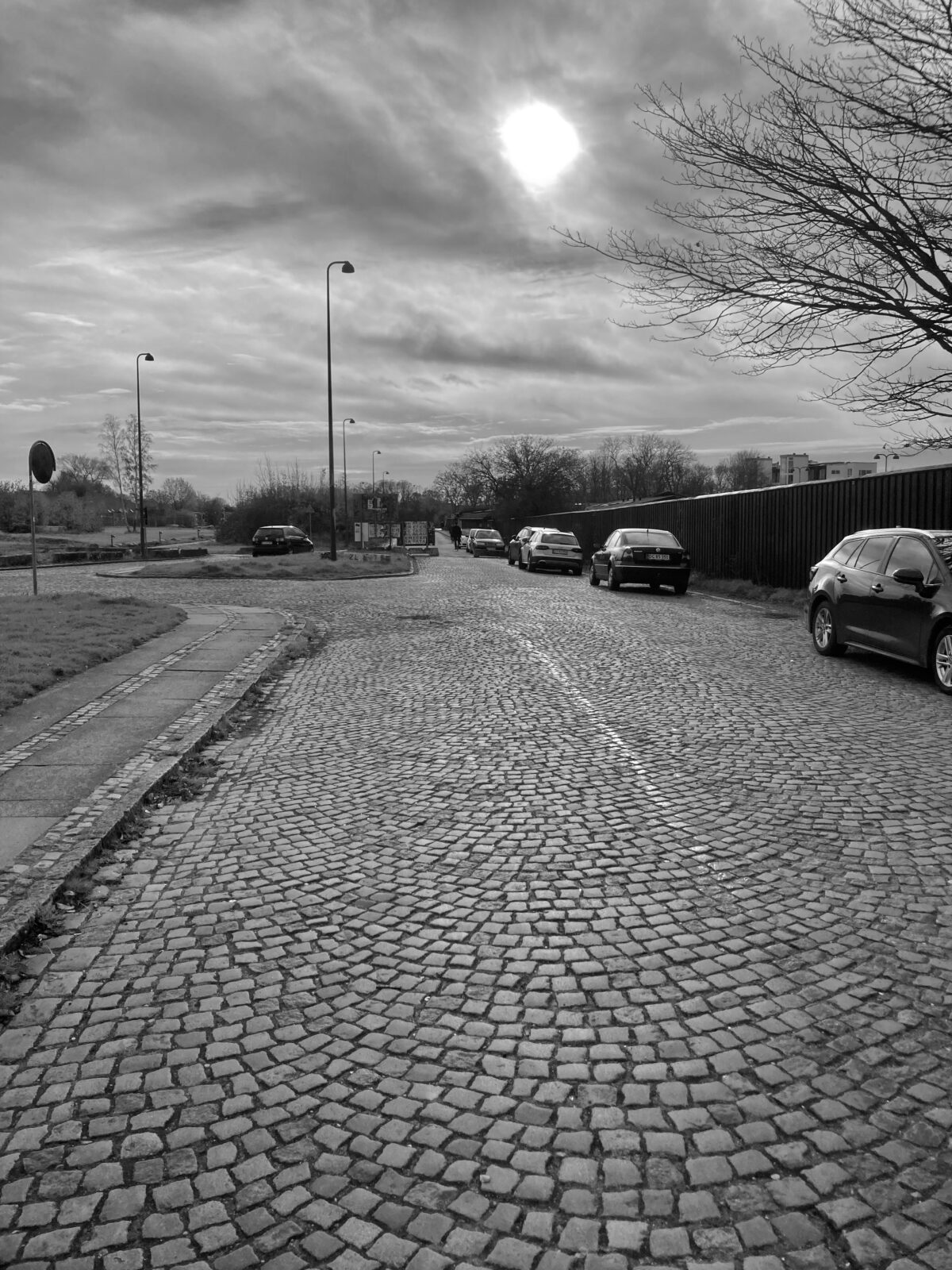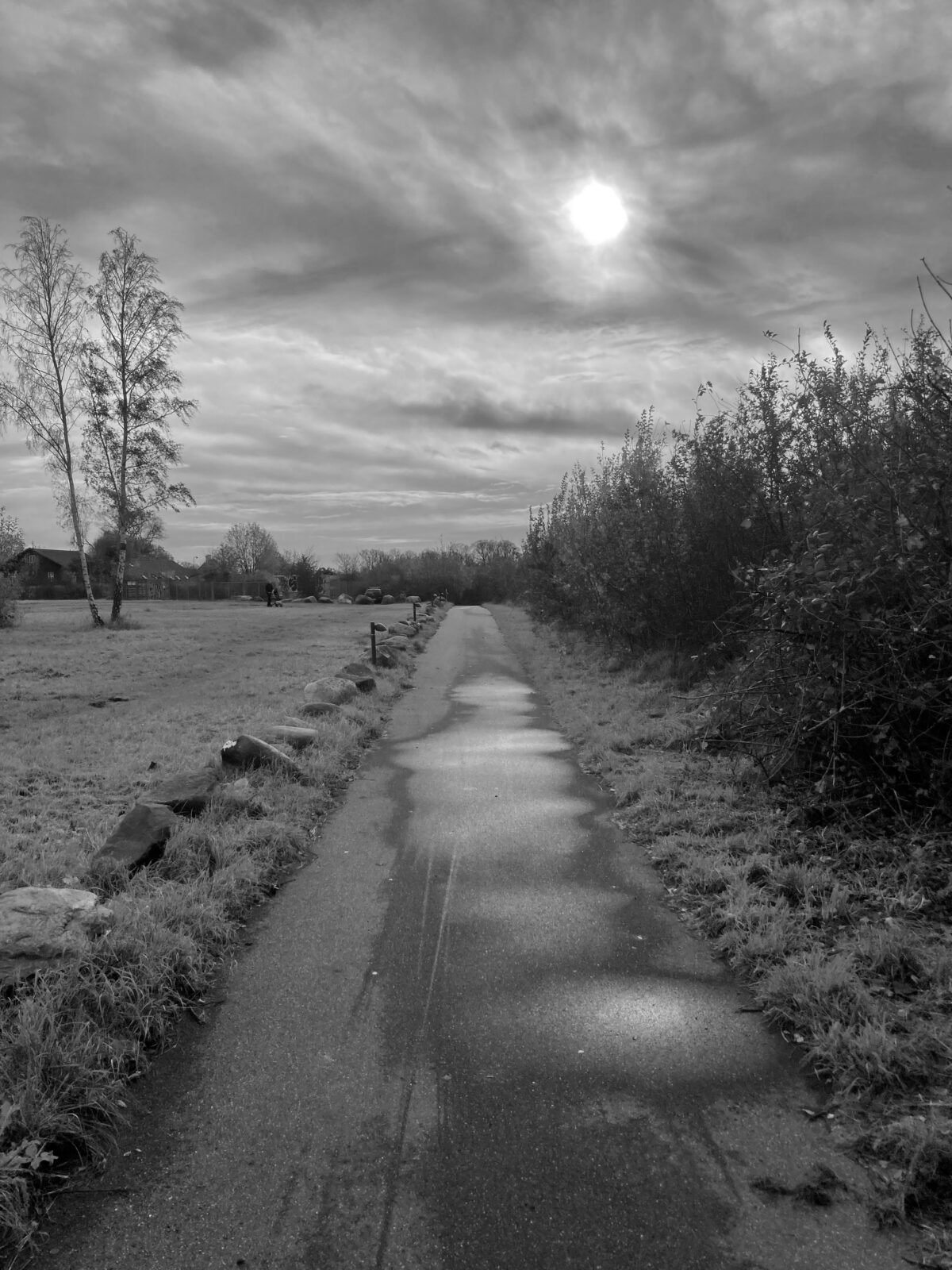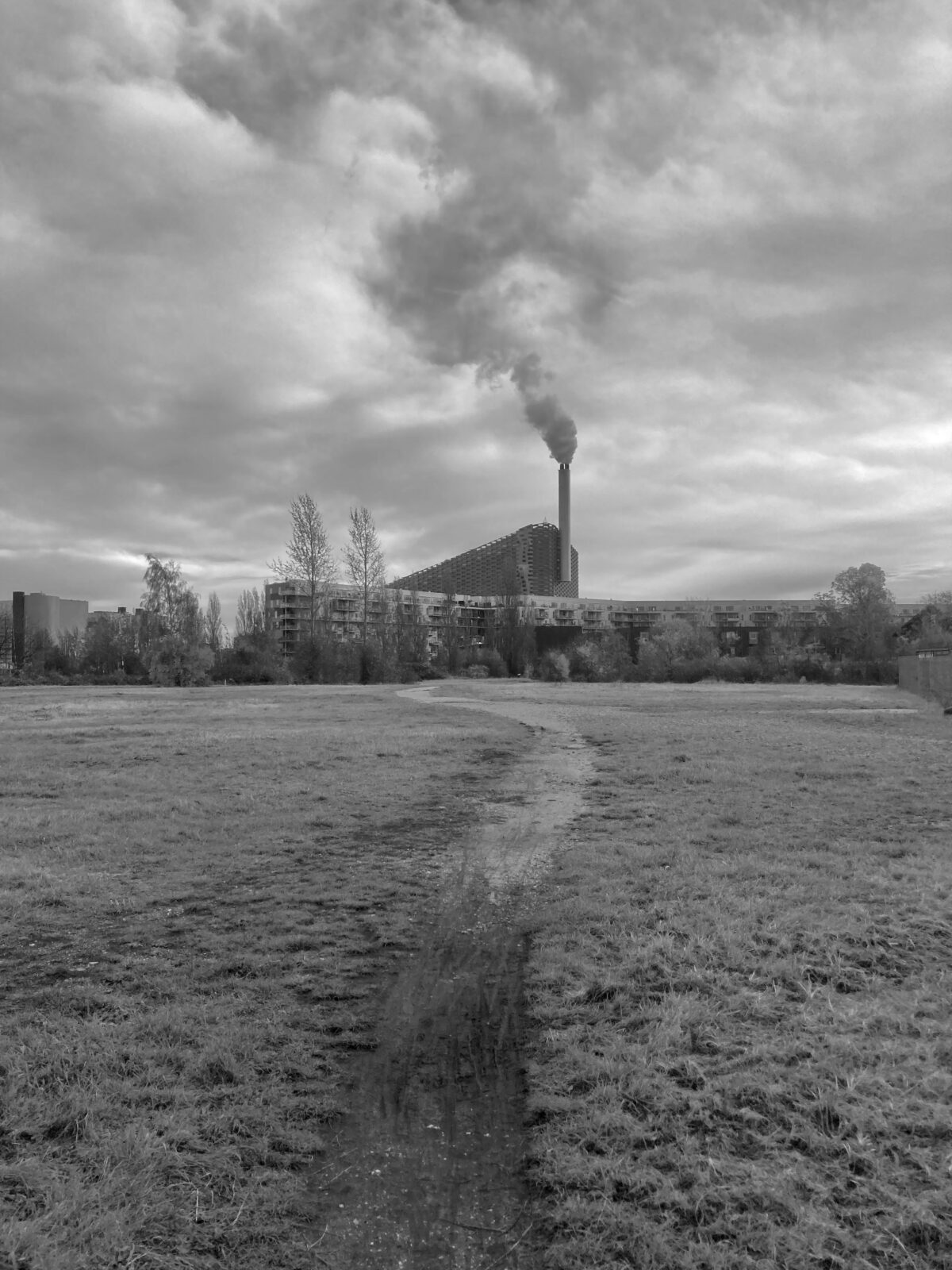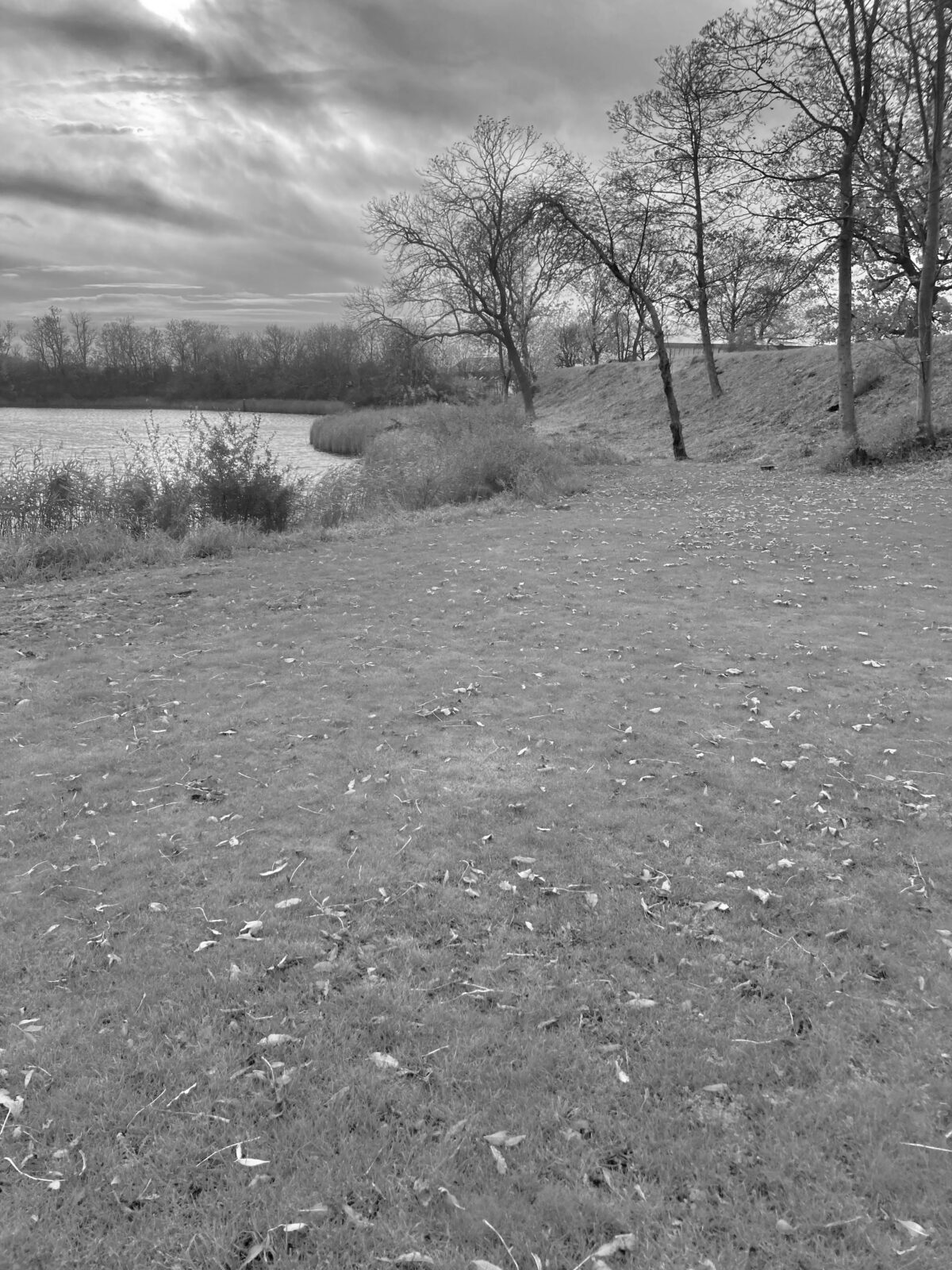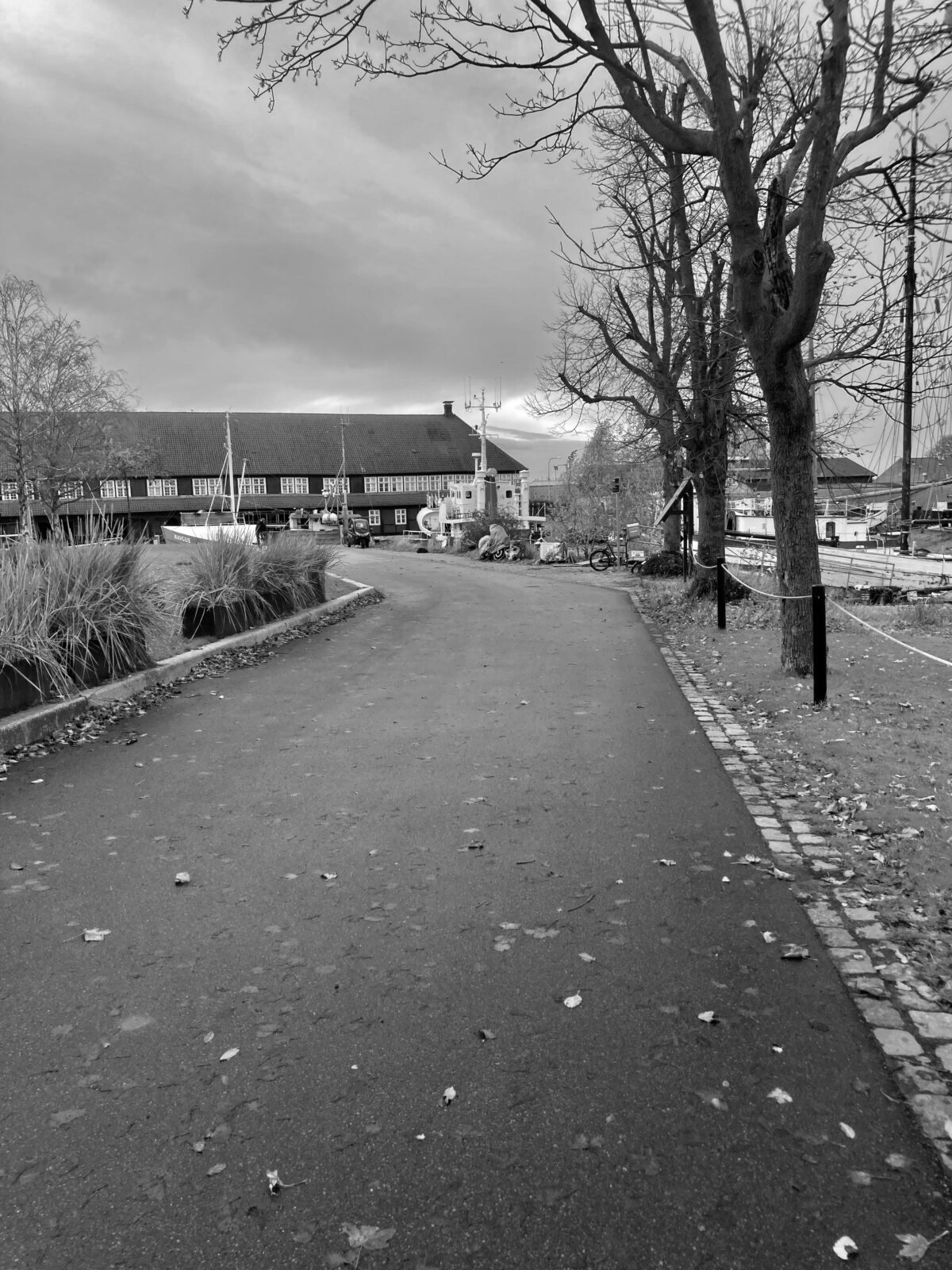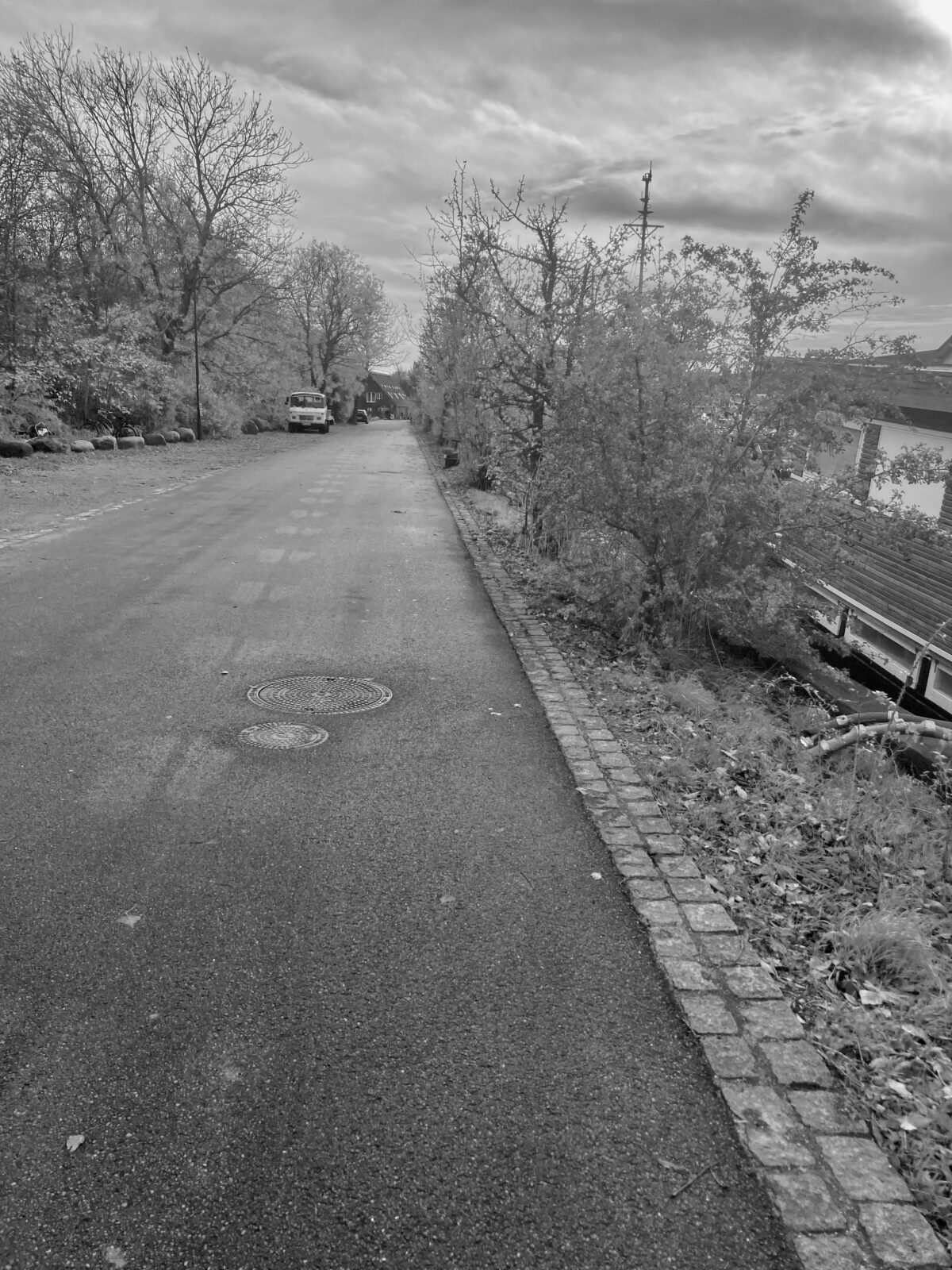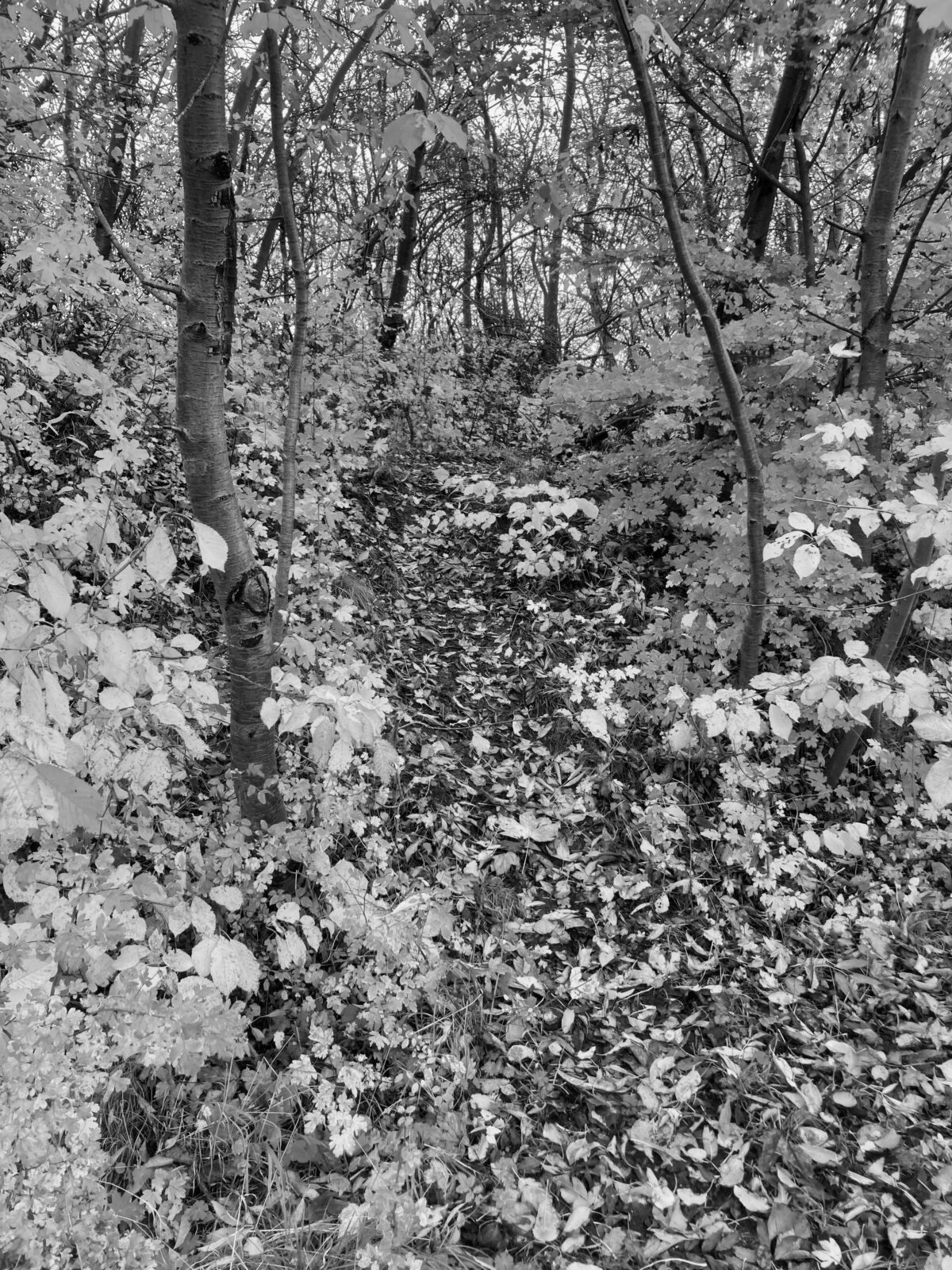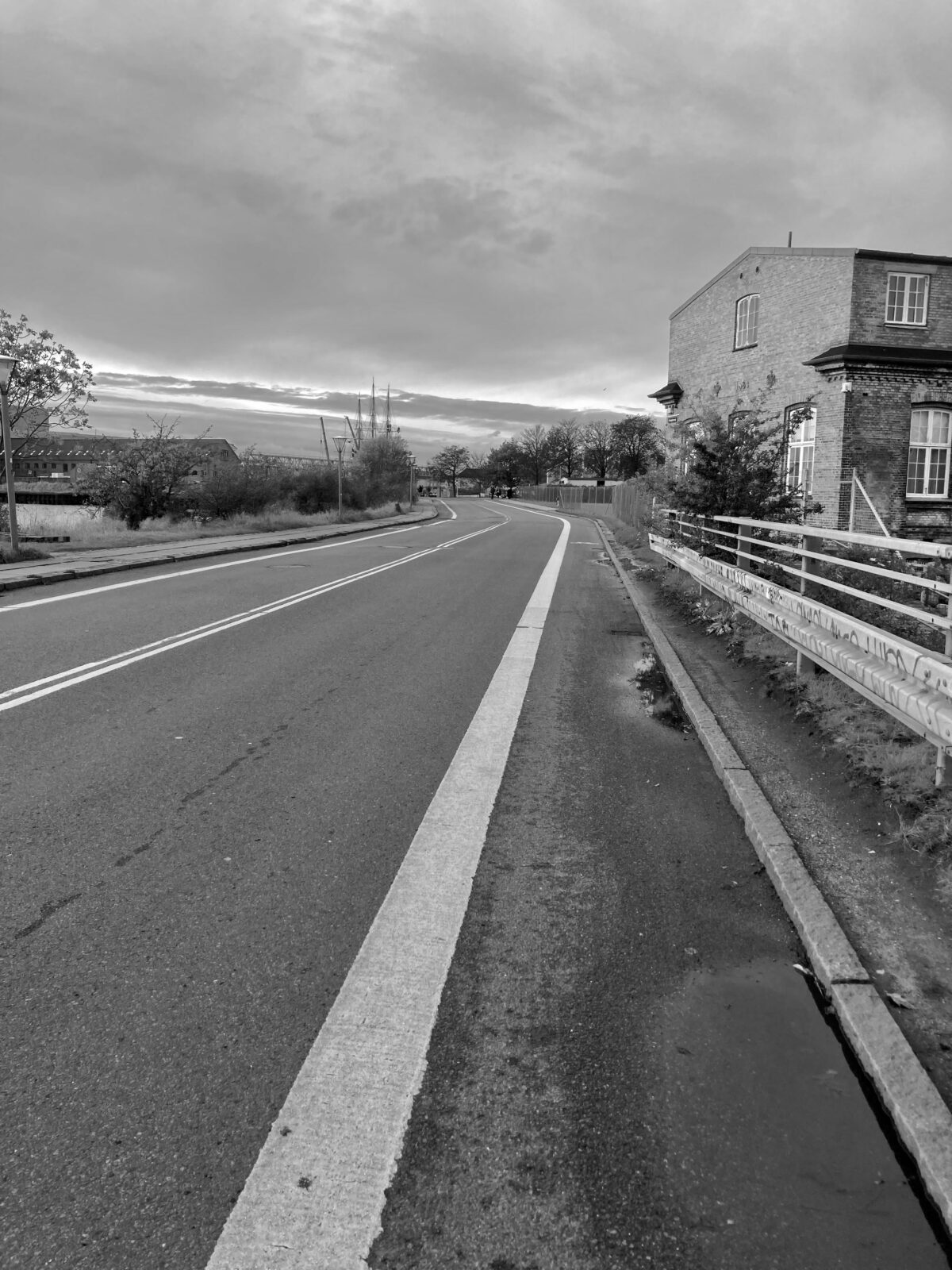Listening Walks
Listening Walks is the practice of listening while walking. Bureau for Listening considers this a very banal as well as deep-rooted and complex practice with profound affections and consequences, on a scale from the microscopic to the planetary. Walking and listening, and the lack of walking and listening, is embedded in our history of being human, and our future is likely also shaped by our diversified, experimental, and artistic ability to walk and listen – to engage with Listening Walks.
For attuning, artist Stanley Brouwn wrote: “Walk during a few moments very consciously in a certain direction; simultaneously an infinite number of living creatures in the universe are moving in an infinite number of directions.”
Stanley Brouwn, Art 8 Project Bulletin, no. 11, 1969.
Bureau for Listening is committed to learn from past walking and listening practices, to research the diverse repertoire of scores and experience, while keep on testing and developing new contemporary Listening Walks, and foster a space in which we can share and celebrate listening walking together.
You may find us simply wandering and listening around, and you may reach out if we should organize a Listening Walk together.
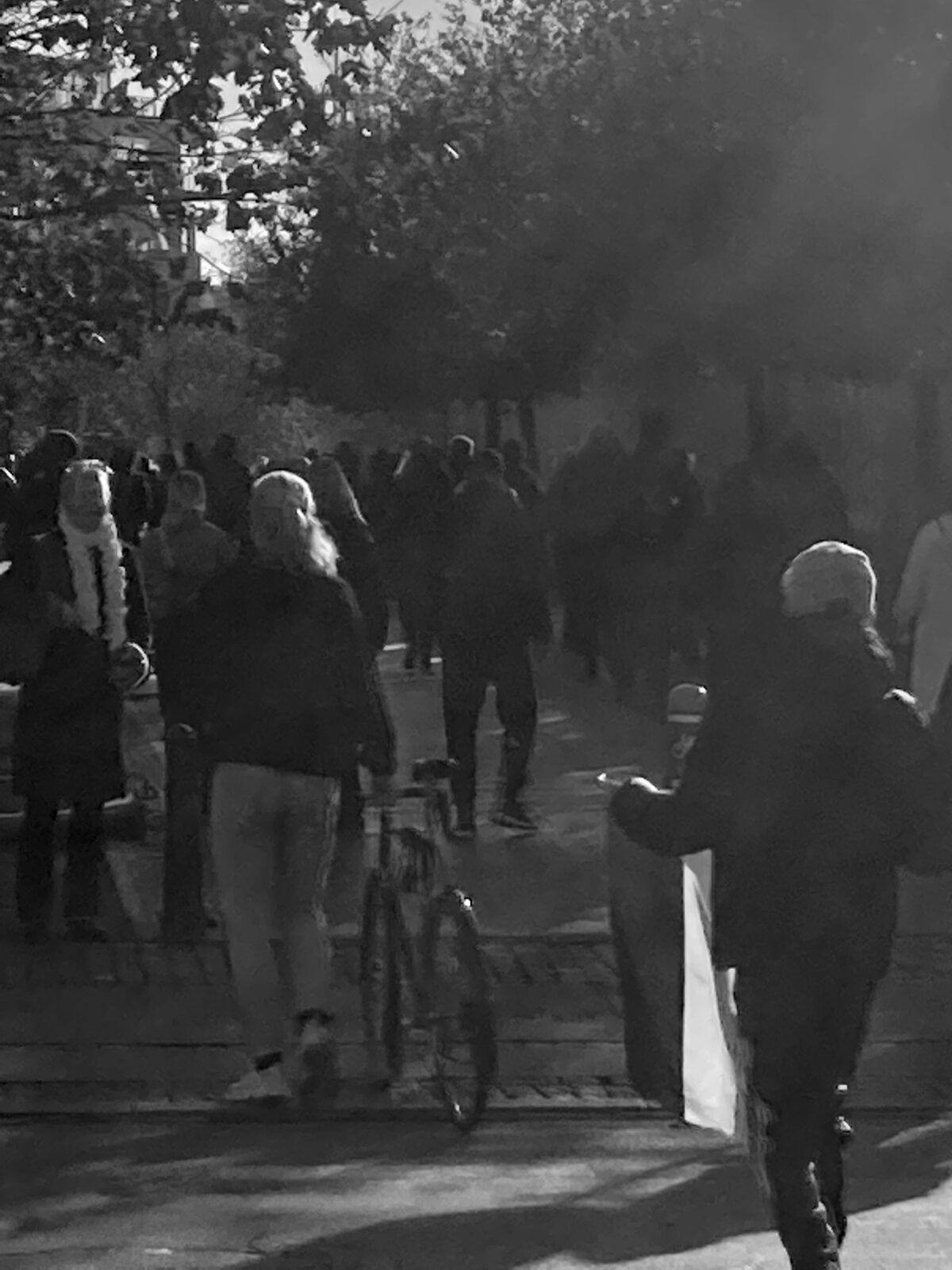
People gathering the 22nd of October 2023 at The Red Square in Copenhagen for demonstration and march for the protection and rights of civilians in Gaza, Palestine.
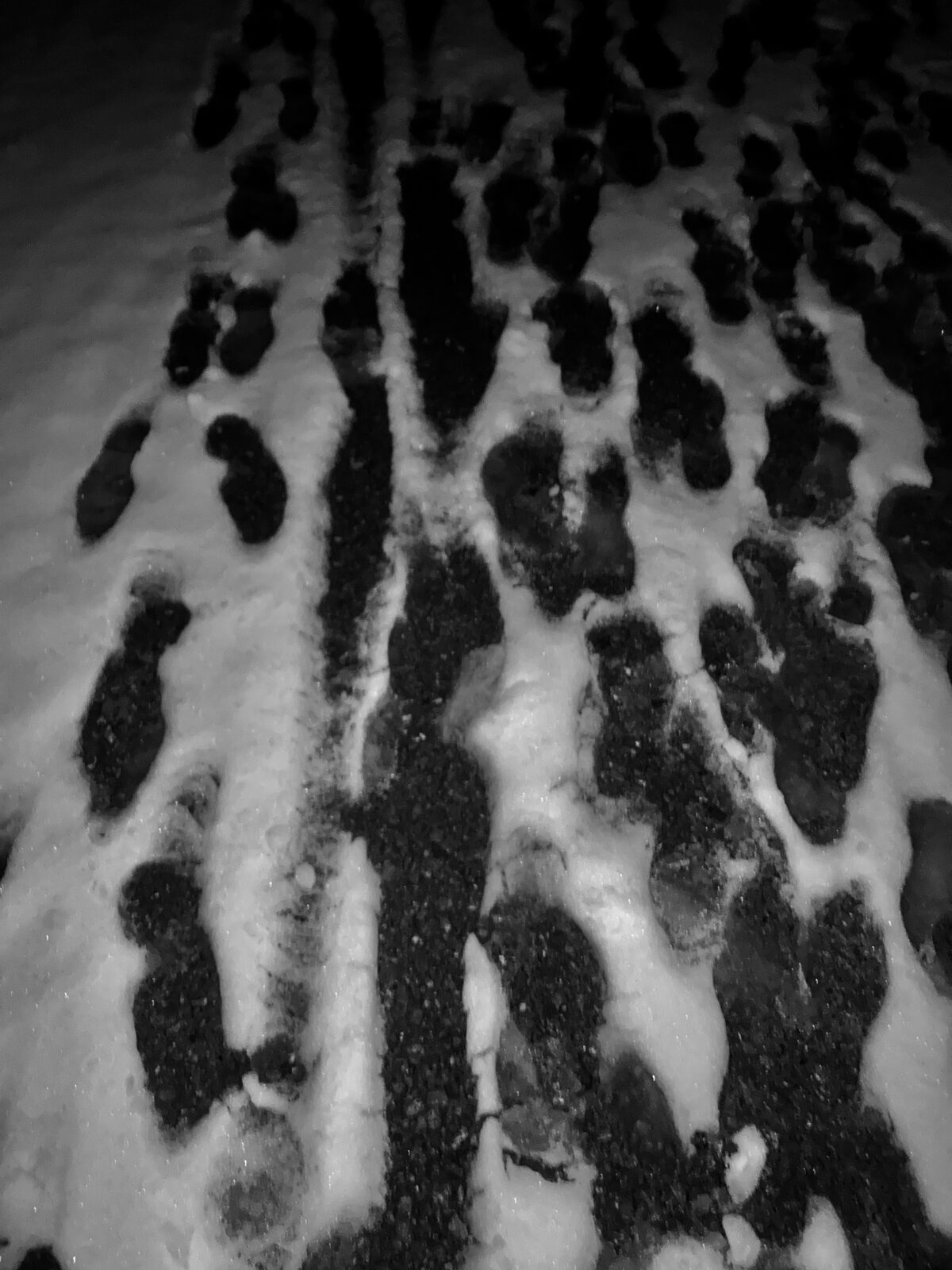
Footprints in the snow on the way to the House on the Hill.
Both within the framework of the arts, of living and simply being on this sounding and walkable planet, generations of interdisciplinary artists and other practitioners have continued to investigate and put forth the relationship between body and our shared environment by experimenting with multiple ways of listening through soundwalks and listening walks. We are unable to take a step without it sounding, within positioning ourselves to new sound, without being in a completely different relationship with ungraspable other-than-human entities.
As context sound artist, researcher and writer Andra MacCartney highlights different listening postures within the listening walk:
Group soundwalks are often led by a listening guide who will suggest ways of listening including musical listening to pitches, rhythms, textures, harmonies; subjective listening while thinking about relationships between bodily sounds and their surroundings; historical listening in which people think of other times they and others have walked in that place or in similar places and how the present sounds are similar or different; political listening when paying attention to which sounds are more ubiquitous, which are masked, which inaudible and who controls these sounds; and evocative listening where the listener pays attention to related sensual associations that are brought to the surface. In the public soundwalks, participants often comment on their awareness of listening as a group, or the group presence as they listen and move together in silence through a place, a moving awareness that can heighten the listening experience and contribute lively energy to the discussions afterwards.
Andra MacCartney, “Soundwalking and Improvisation”, Improvisation, Community and Social Practice (August 2010), http://www.improvcommunity.ca/research/sound-walking-and-improvisation.
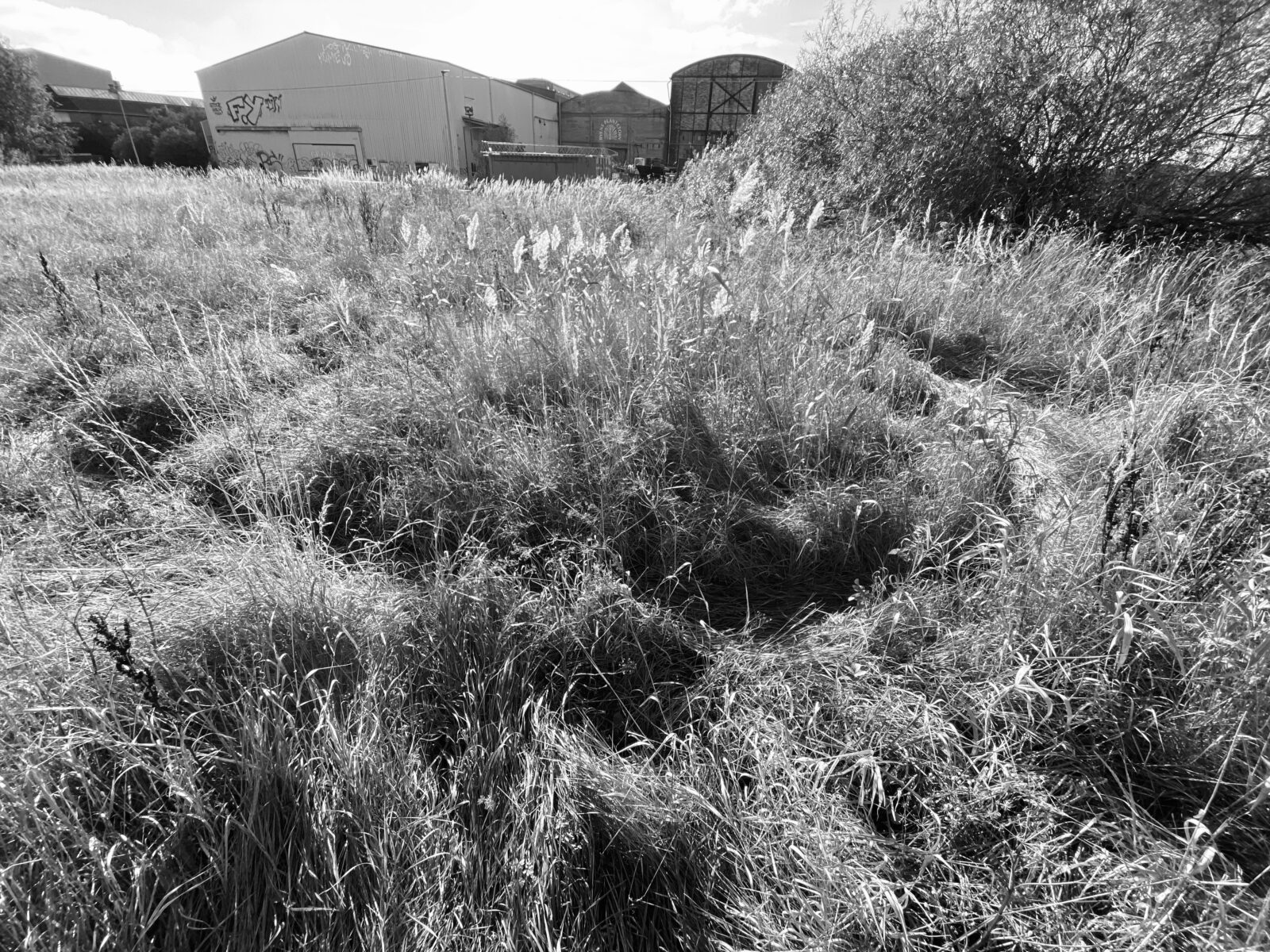
A circular down trodden path.
Score for Slow Listening Walks
(By Bureau for Listening for/or occasion of the Slow Listening group)
This walk is for one for more listening walkers.
It can be performed at any time during any day.
The score is as an open framework, meant to be interpreted creatively differently by each ‘performer’.
1: Find yourself a place in time and space. Outside, inside or in-between. Make sure you have a minimum of one hour.
2: Start walking as slowly as you can. Take small steps slowly. Spend as much time as possible on each step. This walk is less about achieving a distance possible to measure in meters, as it is about the depth and entanglements of the walk itself.
3: For each step mobilize your attention towards the small changes – it could be anything (is anything). For example your balance; the heart beating; shifts in your visual perspectives; notice of how the scent of your location changes; the sounds you hear during one step compared to the next step, etc. What is on your mind, from step to step? Maybe over time you experience a change in how you meet and greet and stay-with the living entities, before you or they continue to slowly move on.
4: Continue to simply keep walking slowly. Extend your attention to even smaller and smaller details and possible connections on your way. Listen both inward and outward. Remember to breathe and find joy in doing what you do, and be where you are.
5: End the performance when ready to do so. At your last ‘step’ proclaim in your own way (to yourself or others). “This was a Slow Listening Walk”. (- otherwise this score could have been any random beautiful moment in time and space of a being moving and noticing slowly.)
We thank you for trying out and interpreting this score.
Some inspirational artistic scores for basic and slow listening walks:
Ben Patterson, stand erect (1962)
stand erect
place body weight on right foot
lift left leg and foot with bent knee several inches above ground while balancing on right foot
extend left leg forward and place foot on ground. heel first. several inches ahead and to the left to right foot.
shift body weight to left foot
lift right leg and foot with bent knee several inches above ground while balancing on left foot
extend right leg forward and place foot on the ground. heel first. several inches ahead and to right to left foot.
Shift body weight to right foot
continue sequentially left, right, left, right until process become automatic.
Ben Patterson, Methods and Processes (Paris: Self-published, 1963) unpaginated.
Pauline Oliveros, Extreme Slow Walk (2005)
Moving as slowly as possible, step forward with the heel to the ground first, let the weight of the body shift along the outside edge of the foot to the small toe and across to the large toe. As the weight of the body fully aligns with that foot then begin the transition of shifting to the other foot. Small steps are recommended as balance may be challenged. Maintain good posture, with shoulders relaxed and head erect. use your breathing. The challenge for this exercise is that no matter how slow you are walking, you can always go much slower.
Pauline Oliveros, Deep Listening: A Composer’s Sound Practice. (New York: iUniverse, 2005), page 20.
Jiri Kovanda, X X X, 1977
—
October 28th, 1977
Prague,
…I walk along carefully, very carefully, as if I were on ice that might crack at any moment.
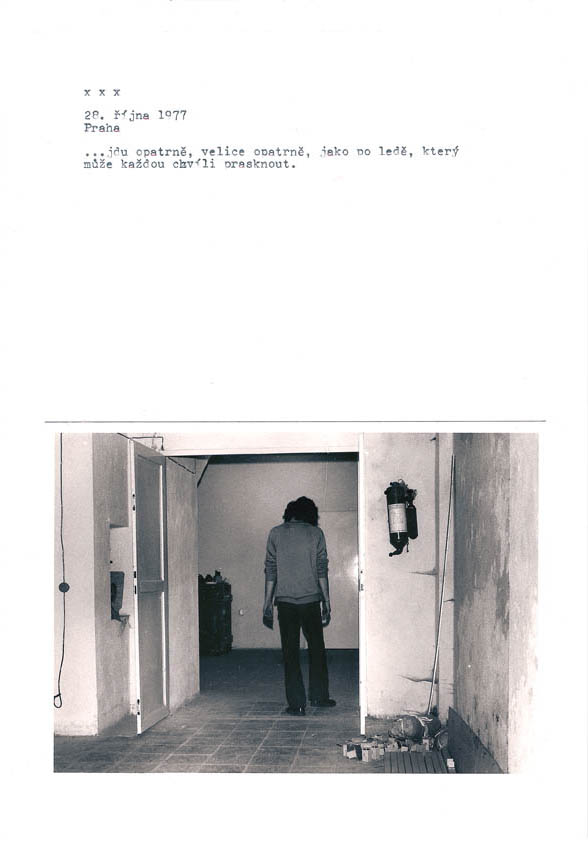
Yoko Ono, Walking Piece, 1964
Walk in the footsteps of the person in front.
- on ground
- in mud
- in snow
- on Ice
- in water
Try not to make sounds.
Published in Grapefruit, 2000 [1964]. New York: Simon & Schuster.
Max Neuhaus, Listen, 1966-1979

Listen-postcard, 1979
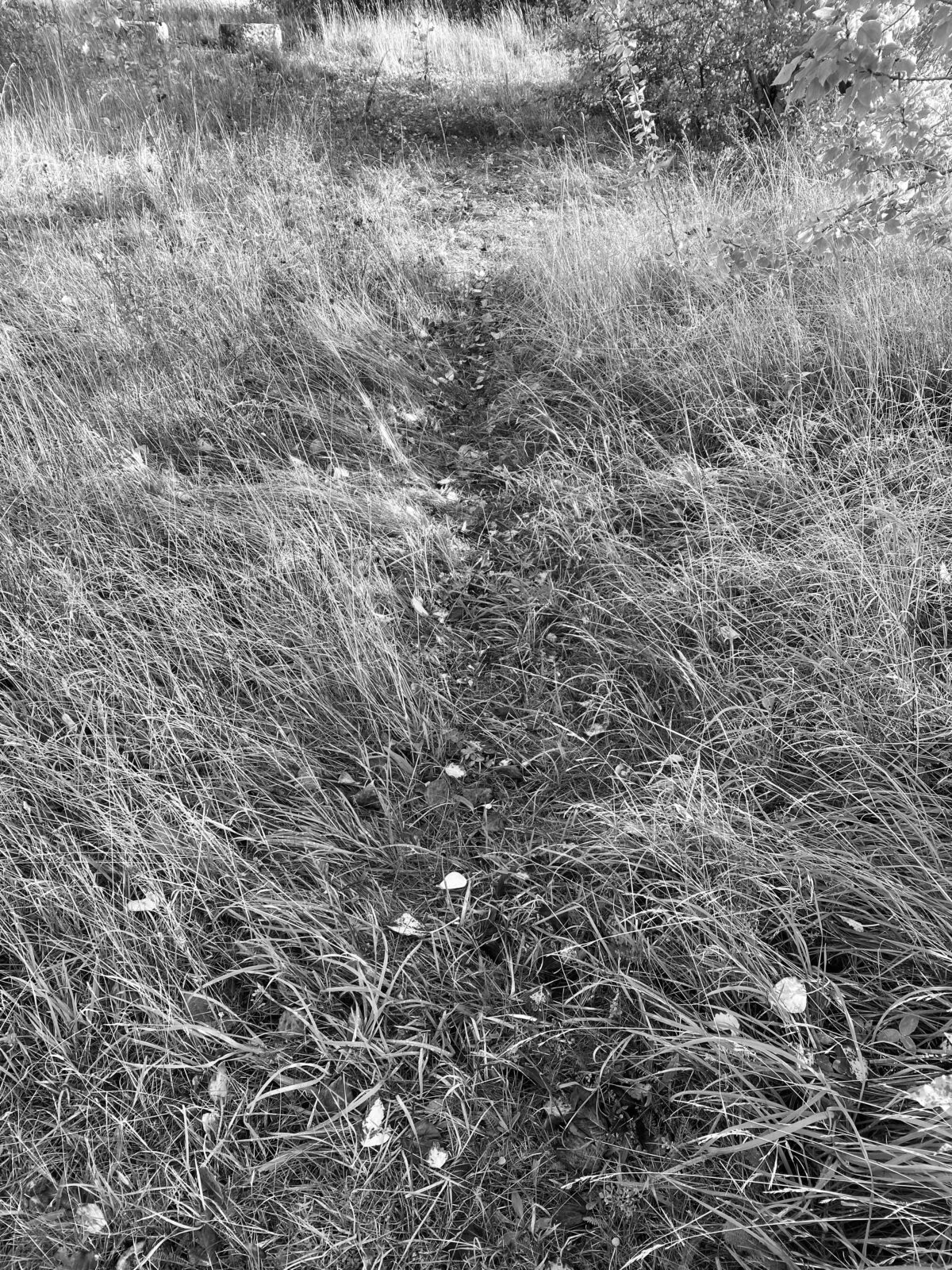
We invite you to explore the Listening Walks of The Grass Field Institute for Contemporary Listening. These Listening Walks are only shared and practiced on-site (exclusively).
We propose that you transform getting-to-the-institute into a Listening Walk of your own.
A great and comprehensive research on this matter, of walking and listening, is Going Out. Walking, Listening, Soundmaking, 2022, edited by Elena Biserna.
The publication combines a theoretical and historical overview by Biserna with a complex and diverse collection of contributions from practitioners, past and presence, in the format of notes, scores, theory, facsimiles, interviews etc. The publication makes no claim about completeness.
Furthermore, Biserna has also edited the comprehensive collection of different scores for walking, Walking From Scores, 2022.
Both publications has been a valuable resources for tracing, understanding, situating, and finding inspiration for different Listening Walks.
A note to reflect on:
Listening is a performative act.
[…]
Listening also means attending.
Attending is a practice.
The space of the audience
Is a performative space.
Excerpt from: David Helbich, Listening Is a Performative Act, MusikTexte, no. 149, May 2016.
Here follows limited visuel documentation of a Listening Walk that should have been recorded, drawn and discussed instead as documentation:
